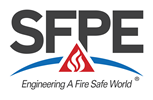FEMTC 2018
Agent-Based Modeling of Meta-Communication with Assisted People During Emergency Egress 
Alberto Tinaburri - Ministry of the Interior, Italy and University of Rome “Tor Vergata”
Abstract
A few modeling approaches can be used to assess the egress of people having the necessity of being assisted, since both physical and cognitive aspects should be considered In this study, an agent-based approach is adopted with a focus on the behavioral rules assigned to the agents depending on their characteristics and goals In an emergency, while the majority of the agents recognize the risk and starts its egress finding the way-out, the people requiring assistance do not necessarily act in that way Trained staff operators are required to get in communication with those needing help that could unwillingly remain inside, with meta-communication abilities representing the ways that “link” rescuers and assisted people A unified framework is proposed to establish a standard codification of the occupant profiles for the purpose to evaluate their evacuation capabilities Staged evacuation, where only the interested portion of the building or facility is cleared of its occupants, is typically required by fire codes in critical infrastructures before ordering the total evacuation In health care occupancies the evacuation process of a ward includes often as a first step the relocation of the patients to one or more area of refuges mainly located in the same floor (progressive horizontal evacuation), in accordance with an established emergency actions plan For this scenario, the approach adopted by the Pathfinder software is compared with the one that is possible to get by coding the design behavioral rules in the NetLogo multi-agent programmable environment, with the latter allowing to model also some basic fire constraints In Pathfinder each agent can be addressed to a predefined egress route or uses a combination of parameters to select its current path to an exit, such as queue time plus travel time In NetLogo, each agent wayfinding strategy has to be coded to follow either the minimum distance or a gradient toward an exit door, which represents an attractor The agents respond dynamically to environmental changes, such as changing queues or exit door availability, with movement characteristics depending on their profiles, autonomous or assisted by devices like a wheelchair or a stretcher The speed of movement adapts to the conditions encountered on the means of egress leading toward their goal (i.e reach an exit door, set a link with the assisted and direct to a safe area) Group movement can be simulated in both platforms to reproduce the link between the patients and their visiting friends during the evacuation process.
Presentation
Resources
| Paper | Presentation | ||
|---|---|---|---|
| HTML | HTML | ||
| Resources Archive File (.zip) | |||

